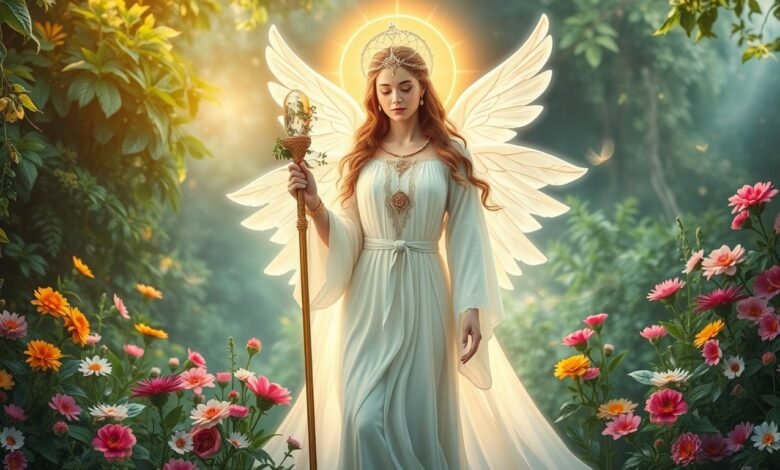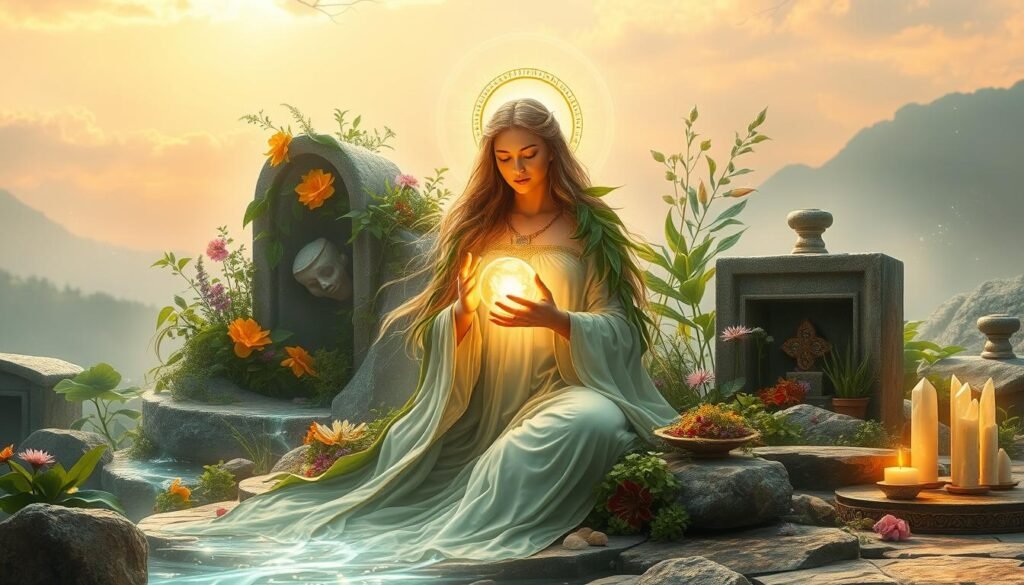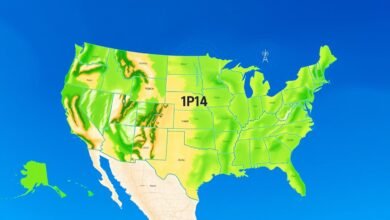Discover Ancient Goddesses of Healing and Their Powers

Ancient cultures worldwide revered goddesses of healing. These divine beings were thought to possess powers of health restoration and vitality. Their teachings shaped medical practices and spiritual traditions for centuries.
These goddess archetypes offer insights into the sacred link between feminine divinity and healing. Their influence continues to inspire modern practitioners and scholars alike.
Egyptian goddess Isis was known for her healing magic. Hindu deity Dhanvantari was seen as the physician of the gods. These divine healers have left a lasting impact on humanity’s collective consciousness.
Their stories, rituals, and symbols have crossed cultural lines. They continue to inspire those who seek wisdom from ancient healing practices.
Key Takeaways
- Discover the rich history of ancient goddesses associated with healing, wellbeing, and medicine
- Explore the diverse cultural beliefs and practices surrounding these divine healers
- Understand the enduring influence of goddess archetypes on modern healing traditions
- Gain insights into the sacred connection between the feminine divine and the art of healing
- Learn how to integrate the wisdom of ancient healing goddesses into your own life and practice
The Concept of Healing in Ancient Cultures
Ancient cultures blended medical knowledge with spiritual beliefs for healing. Healing goddesses played a crucial role in shaping traditional practices. This holistic approach embraced both physical and spiritual aspects of wellness.
Overview of Healing Practices
Greek mythology featured Panacea, daughter of Asclepius, the god of medicine. She represented sacred restoration and symbolized women’s role as healers in ancient cultures.
The Hippocratic Oath mentions Panacea and her sister Hygieia. This ethical guide for physicians highlights the importance of healing deities in ancient medical practices.
Significance of Goddesses in Healing
Panacea’s name means “a mythical panacea for all ills.” She was revered for providing universal wellness and curing various ailments. Her sisters represented different aspects of health and well-being.
“The power of words, like those describing Panacea, highlights the beauty and significance of language in depicting healing practices throughout history.”
Various publications have explored Panacea and healing concepts. These studies show the lasting impact of ancient archetypes on modern wellness perspectives.
Notable Goddesses of Healing Around the World
Cultures worldwide have revered goddesses with healing powers. These divine beings were thought to possess rejuvenation abilities. They offered cures and protection to their followers.
The Healing Powers of Isis
In Egyptian mythology, Isis was a powerful goddess of healing and magic. She could resurrect her husband, Osiris, showing her control over life and death.
People called on Isis for help with childbirth and diseases. Her temples were centers of medical knowledge and practice.
How Brigid Influenced Healing Traditions
Brigid, the Irish goddess of healing and poetry, was important in Celtic mythology. Her powers were believed to cure even the toughest illnesses.
Brigid’s influence lives on through her feast day. Many still celebrate it as a time of renewal.
The Role of Chandra in Ayurveda
In Hindu tradition, Chandra, the moon god, is linked to Ayurvedic medicine. His cycles were thought to affect the body’s rhythms and healing.
Ayurvedic healers often used moon-based rituals in treatments. They drew on Chandra’s powers for ethereal cures and rejuvenation.
| Goddess | Culture | Healing Associations |
|---|---|---|
| Isis | Egyptian | Healing, magic, protection |
| Brigid | Celtic | Healing, smithcraft, poetry |
| Chandra | Hindu | Ayurvedic medicine, lunar cycles |
| Eir | Norse | Healing, medicine |
| Airmed | Celtic | Herbalism, healing |
| Ixtlilton | Aztec | Fertility, medicine, obstetrics |
These are just a few healing goddesses from ancient cultures. From Isis to Chandra, these deities still inspire us today.
Their enduring legacy of healing and wellness continues to captivate people around the world.

The Connection Between Nature and Healing Goddesses
Ancient healing goddesses were deeply connected to the natural world. They were linked to elements, plants, and herbs. This connection reflects the bond between nature and divine healing.
Understanding these natural associations can unlock ancient wisdom. We can then apply this knowledge to modern healing practices.
Natural Elements in Healing Practices
Healing goddesses were known for their power over natural elements. Sirona, a Gallo-Roman goddess, was linked to healing springs. Ixchel, the Maya goddess, was associated with medicinal herbs and plants.
The serpent became a universal symbol of medicine. It’s seen in the Rod of Asclepius, still used in medical logos today.
Symbolism of Plants and Herbs
Plants and herbs held deep meaning in ancient healing practices. Airmid, from Irish mythology, was known for her vast herbal knowledge. She cataloged herbs that sprouted from her brother’s grave.
Gallo-Roman goddesses Maia and Rosmerta were linked to specific healing plants. This shows the deep respect for nature’s medicinal gifts.
“The mystical balm of ancient healing goddesses was deeply rooted in the natural world.”
We can rediscover the wisdom of healing goddesses by embracing nature. Spending time outdoors or using medicinal plants can help. Honoring these ancient archetypes can also guide us.
The path to holistic well-being lies in balancing the material and mystical. By doing so, we can apply timeless wisdom to our modern lives.
Healing Rituals and Offerings to Goddesses
Ancient cultures used healing rituals to seek help from divine healers. These ceremonies aimed to gain favor from goddesses. People believed this would improve health and protect against diseases.
Common Rituals Across Cultures
Some traditions, like the Batak people, had powerful shamans who summoned healing gods. They used a small white candle to represent the person needing healing. Various deities from different pantheons were called upon.
Rituals often started by creating a sacred space and lighting candles. Specific herbs were used in incense blends. Visualization techniques helped people imagine the illness disappearing with the smoke.
Significance of Offerings in Healing
Offerings to the healing goddess were crucial in these rituals. They could be physical items like milk or flowers. Sometimes, people offered poems or dances instead.
Making an offering with an open heart was thought to please the divine healer. In some traditions, people would show respect to the goddess’s image after the offering.

“The goddess Isis was revered as a divine healer, capable of restoring health and vitality to those who sought her aid through rituals and offerings.”
Myths and Legends Behind Healing Goddesses
Healing goddesses have fascinated people for centuries. Their stories involve miraculous celestial remedy and sacred restoration. Egyptian goddess Isis embodies maternal love, while Sekhmet represents ferocity and healing powers.
Tales of Transformation and Healing
Greek mythology tells of Panacea, who could cure any ailment. Her name means “universal remedy,” showing how people revered her.
Aceso was celebrated for her role in the healing process. She focused on the recovery journey, not just the end result.
These stories show how people believed divine beings could help with health transformations.
“The reverence for Aceso and her family in Greek society portrayed a belief in deities’ roles in wellness and the significance of connecting religious practices with health and healing.”
Influence on Modern Healing Narratives
The idea of a “panacea” still captivates us today. It appears in medical research and popular culture.
Ancient myths about healing goddesses shape modern stories. They remind us of our timeless desire for celestial remedy and sacred restoration.
How Healing Goddesses are Celebrated Today
Ancient healing goddesses still play a role in modern celebrations. Festivals and ceremonies honor these deities’ mythical panacea and ethereal cure. These events also keep ancient healing wisdom alive.
Festivals and Ceremonies
The Irish goddess Brigid is honored during Imbolc, a Gaelic spring festival. People seek Brigid’s healing powers and blessings for the new season.
In Hindu tradition, Kali is celebrated during Kali Puja. This festival calls on Kali’s energy for personal and social healing.
Modern Practices Inspired by Ancient Traditions
Today’s healing methods often draw from goddess traditions. Some therapies use elements of goddess worship or natural remedies linked to these deities.
Herbalism, crystal healing, and energy work may include goddess-inspired practices. These often involve herbs, crystals, and rituals associated with healing goddesses.
“The blend of ancient wisdom and modern practice is a testament to the enduring power of these mythical panacea and their ability to guide us on our journey towards ethereal cure and holistic well-being.”
The Role of Feminine Energy in Healing
Feminine energy has deep roots in ancient cultures. It’s linked to nurturing, intuition, and healing power. Goddesses like Isis and Parvati embody these qualities, showing the divine feminine’s impact on wellbeing.
Understanding Feminine Energy in Health
Feminine energy is key in holistic healing practices. It reflects natural cycles, body wisdom, and self-care’s transformative power.
Studies show that nurturing relationships and self-care are vital. Cultivating emotional independence also helps harness feminine energy for primordial rejuvenation and mystical balm.
Balancing Masculine and Feminine Energies
Ancient healing traditions stress balancing masculine and feminine energies. This balance is crucial for overall health and wellbeing. It reflects wellness as a harmony of opposing forces.
Embracing nurturing, intuitive feminine qualities is important. Pairing them with focused, action-oriented masculine traits can unlock profound healing. This blend fosters primordial rejuvenation and mystical balm.
| Nourishing Relationships | Self-Care as a Priority | Emotional Independence |
|---|---|---|
| Emphasizes the importance of nurturing relationships with friends and family, showcasing the statistical value of interpersonal connections in the context of feminine energy healing. | Advocates for self-care practices such as exercise, facials, naps, healthy food, good friends, manicures, relaxation time, beauty, and spending time outdoors, highlighting the statistical significance of self-care in feminine energy healing. | Encourages emotional independence by emphasizing the ability to make oneself feel good and safe, indicating the statistical significance of self-sufficiency in healing through feminine energy. |
“A return to a higher consciousness understanding of the Divine Feminine could lead to healing and transformative power in the present-day world.”
Integrating the Wisdom of Goddesses in Modern Healing
Ancient goddess traditions offer timeless wisdom for modern healing practices. This wisdom can be found in herbal remedies and holistic health approaches. Many people are now embracing these ancient teachings in their daily lives.
Incorporating Ancient Practices into Life
Goddess archetypes provide a rich source of healing wisdom. You can tap into this by meditating on healing goddesses or chanting their mantras. These practices connect you to ancient knowledge and offer fresh views on personal growth.
Visualizing a nurturing goddess presence can also be powerful. It helps you access deeper levels of healing and self-discovery.
Benefits of Embracing Healing Archetypes
Connecting with ancient goddess archetypes can transform your life. It deepens your appreciation for the divine feminine and nature’s wisdom. This connection fosters a holistic approach to health and well-being.
Aligning with goddess energies can bring emotional healing and spiritual growth. It can also renew your sense of purpose and vitality.
FAQ
What are health deities and why are they important in various mythologies and religions?
Health deities are gods or goddesses linked to healing and wellbeing. They’re common in polytheistic belief systems across cultures. These deities have influenced medical practices and spiritual beliefs for centuries.
How did ancient healing practices involve a combination of medical knowledge and spiritual beliefs?
Ancient healing blended medical know-how with spiritual beliefs. Goddesses were vital in healing traditions across cultures. Deities like Panacea, Hygieia, and Isis were tied to healing and protection.
Can you provide examples of notable healing goddesses from different cultures?
Notable healing goddesses include Isis (Egyptian), Brigid (Irish), and Chandra (Hindu). Sirona (Gallo-Roman) and Ixchel (Maya) are also important examples. These goddesses were often linked to natural elements like healing springs.
They were called upon for various health aspects. This included childbirth and curing diseases.
How did healing rituals and offerings to goddesses vary across cultures?
Healing rituals often involved prayers, sacrifices, and offerings to please the deities. In some traditions, shamans summoned healing gods for cures. Offerings were thought to gain favor with goddesses.
This was believed to lead to better health outcomes. It could also provide protection from diseases.
What are some of the myths and legends associated with healing goddesses?
Myths about healing goddesses often tell of miraculous cures. For instance, Greek goddess Panacea could cure any ailment. These stories have shaped modern healing narratives.
They’ve inspired literature and cultural practices. The tales often involve transformations and divine interventions.
How are healing goddesses still celebrated in modern times?
Ancient healing goddesses are still honored through festivals and ceremonies today. Some modern healing practices draw from these ancient traditions. They may include goddess worship or natural remedies linked to these deities.
What is the role of feminine energy in healing according to ancient traditions?
Feminine energy is often linked to nurturing and healing in many cultures. Goddesses like Isis and Parvati embody these qualities. Balancing masculine and feminine energies is key in holistic healing.
This balance is seen as crucial for overall wellbeing. It’s a concept that spans various cultural traditions.
How can the wisdom of healing goddesses be integrated into modern healing practices?
Modern healing often uses wisdom from ancient goddess traditions. This can include herbal remedies linked to specific goddesses. Meditation techniques inspired by goddess myths are also used.
Many embrace the holistic health approach of goddess traditions. This connection to ancient wisdom offers new views on health today.





